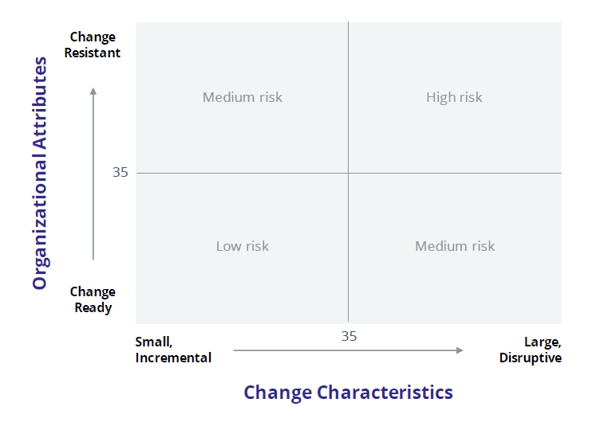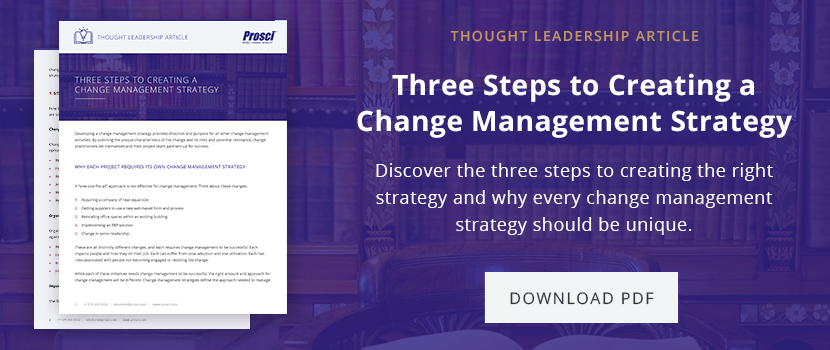Before You Act, Consider These Keys to Preparing for Change

2 Mins
Updated: August 10, 2022
Published: January 2, 2019

Do you know how to prepare for change? The Prosci methodology begins not with change management application but with taking the necessary steps to understand the change and the organization itself before you create your change management strategy. Below are the key activities you need to undertake at the start of project (and change management) planning:
Key #1 – Identify Change Characteristics
Each change in your organization will be unique. As a result, the magnitude of the change management activities will be unique as well. When sizing your change, make sure to include the following areas:
- Scope of the change
- Number of individuals and groups impacted
- Type of change
- Amount of change
Each of the above factors will influence your change management strategy and dictate how much change management you need.
Key #2 – Assess the Organization
Some organizations are ready, willing and able to change while others are change resistant. Assessing organizational attributes is the second key to developing a high-level change management strategy.
When assessing your organization, it is important to understand the following organizational attributes:
- Organizational value system and culture (adaptability to change)
- Capacity for change (how much more change the organization can absorb)
- Residual effects of past changes (past failures may result in "baggage")
Key #3 – Analyze Audience Impact
Changes impact groups differently. Some may experience a high degree of change while others experience only minor changes. Each group within your organization is unique and will have unique challenges requiring special tactics appropriate to that group. When preparing your change management strategy, it must be adapted after understanding:
- What type(s) of change will be felt by the different impacted groups and to what degree
- How many employees are in each group
- What unique organizational barriers exist for each group (i.e. past experience with change, leadership challenges, etc.)
This audience impact analysis allows customization of your five plans: the communications plan, sponsor roadmap, training plan, coaching plan and resistance management plan.
Key #4 – Assess the Project Risks
Each change project has different attributes and therefore different risk factors. The project risk will be a function of the organizational attributes and the change characteristics. You should communicate this risk assessment to the primary project sponsor and use this information to determine if special change management tactics will be required for your project. Using the information you've already gathered, use the grid below to assess risk.

Key #5 – Assess Resistance and Identify Special Tactics
Special tactics in your change management strategy may be required given your change and your organization. You may be able to identify special circumstances or possible resistance before the program even begins. This is called Proactive Resistance Management and is one of three avenues for managing resistance.
Have All the Keys? Create Your Change Management Strategy
Gather all the assessments and data you have compiled from the keys above and combine them into a strategy. Prepare a presentation for the project team and project sponsor to build support for your strategy that includes the following elements:
- Change characteristics assessment results
- Organizational assessment results
- Proposed change management team
- Proposed sponsorship model and sponsor assessments
- Risk assessment
- Recommendations for special tactics
- Next steps
Without these keys, your change management work cannot be tailored to the unique needs of your project. Dive deeper into how to create a change management strategy with the article below.



